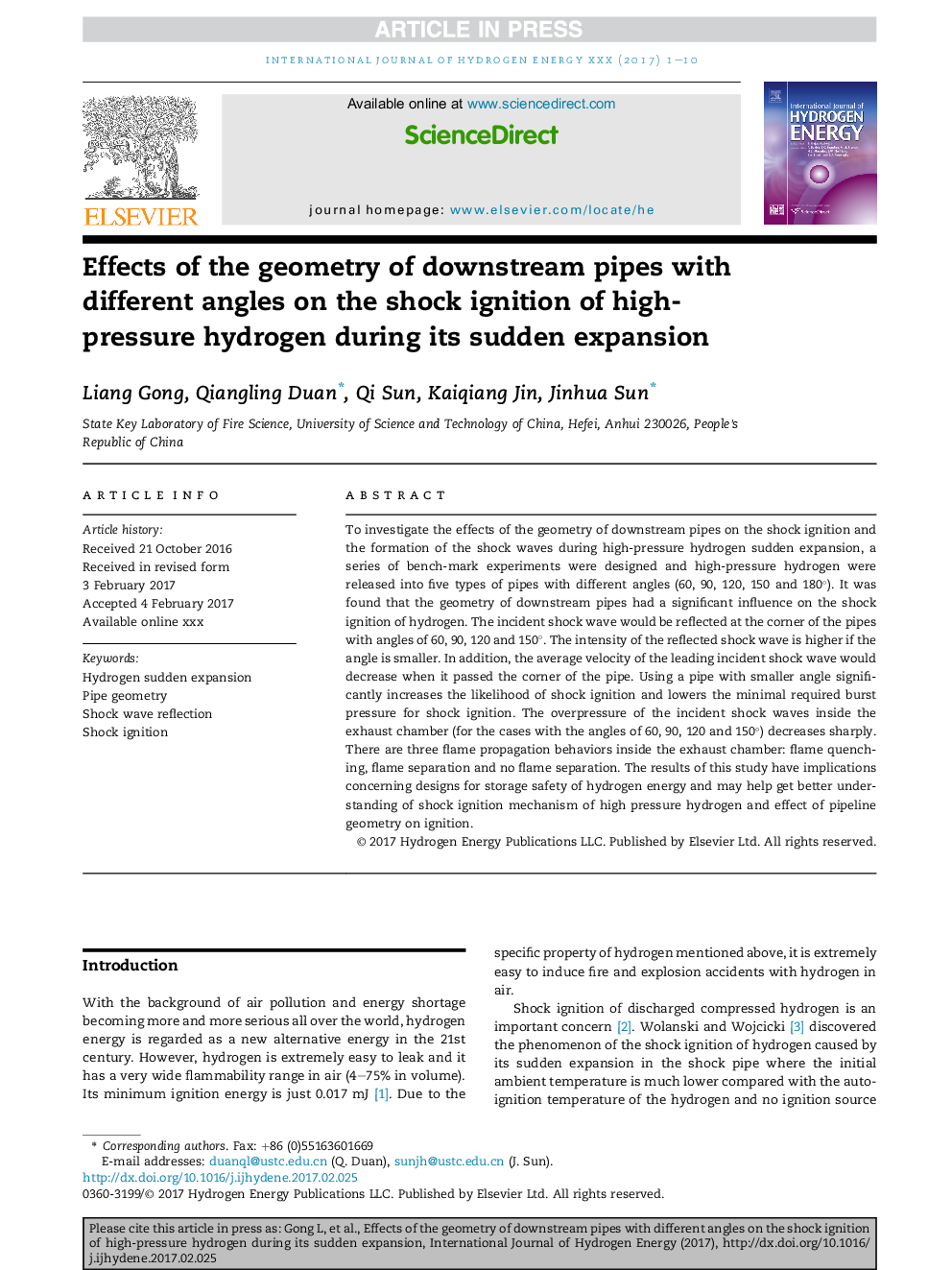| Article ID | Journal | Published Year | Pages | File Type |
|---|---|---|---|---|
| 5148323 | International Journal of Hydrogen Energy | 2017 | 10 Pages |
Abstract
To investigate the effects of the geometry of downstream pipes on the shock ignition and the formation of the shock waves during high-pressure hydrogen sudden expansion, a series of bench-mark experiments were designed and high-pressure hydrogen were released into five types of pipes with different angles (60, 90, 120, 150 and 180°). It was found that the geometry of downstream pipes had a significant influence on the shock ignition of hydrogen. The incident shock wave would be reflected at the corner of the pipes with angles of 60, 90, 120 and 150°. The intensity of the reflected shock wave is higher if the angle is smaller. In addition, the average velocity of the leading incident shock wave would decrease when it passed the corner of the pipe. Using a pipe with smaller angle significantly increases the likelihood of shock ignition and lowers the minimal required burst pressure for shock ignition. The overpressure of the incident shock waves inside the exhaust chamber (for the cases with the angles of 60, 90, 120 and 150°) decreases sharply. There are three flame propagation behaviors inside the exhaust chamber: flame quenching, flame separation and no flame separation. The results of this study have implications concerning designs for storage safety of hydrogen energy and may help get better understanding of shock ignition mechanism of high pressure hydrogen and effect of pipeline geometry on ignition.
Keywords
Related Topics
Physical Sciences and Engineering
Chemistry
Electrochemistry
Authors
Liang Gong, Qiangling Duan, Qi Sun, Kaiqiang Jin, Jinhua Sun,
